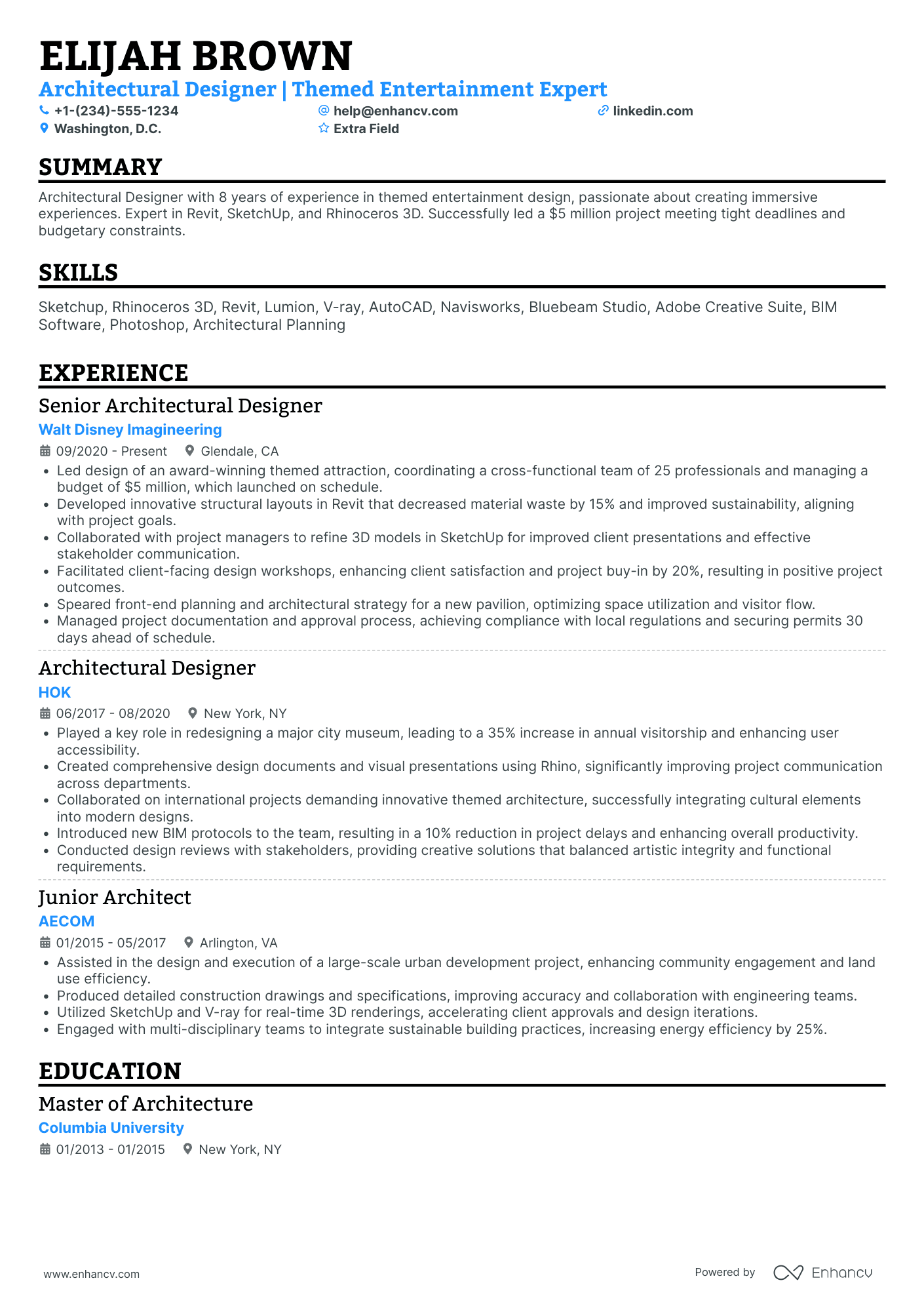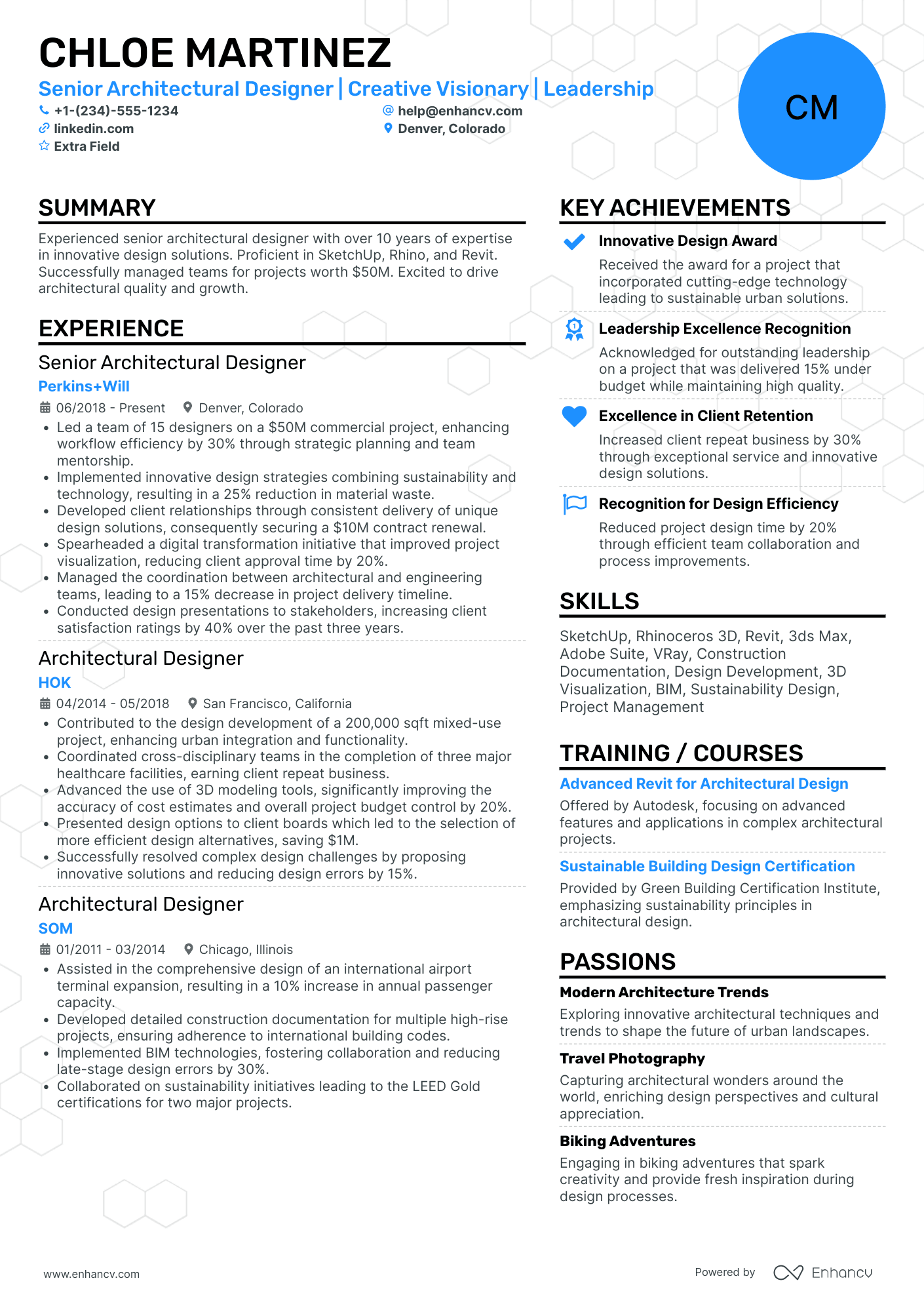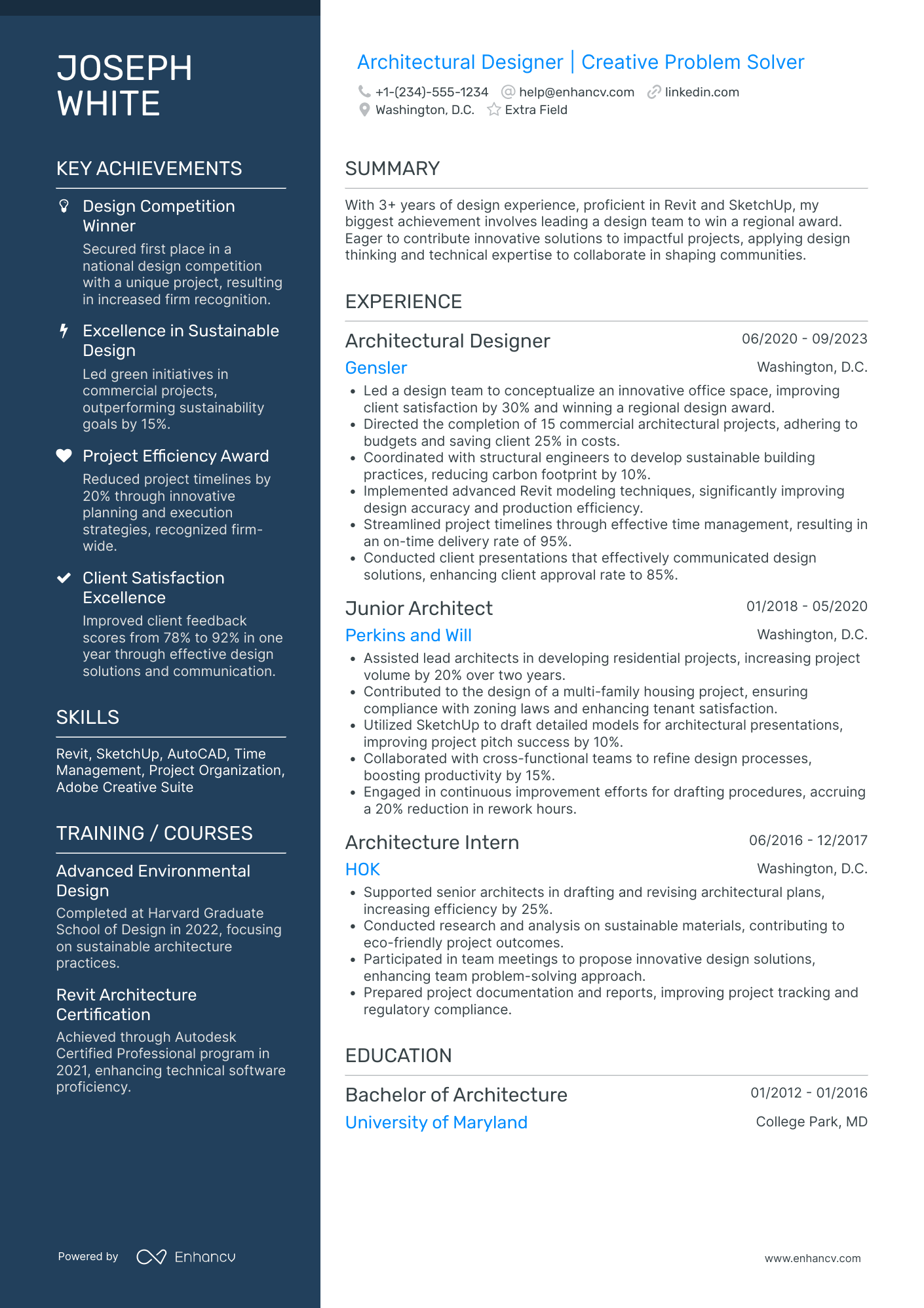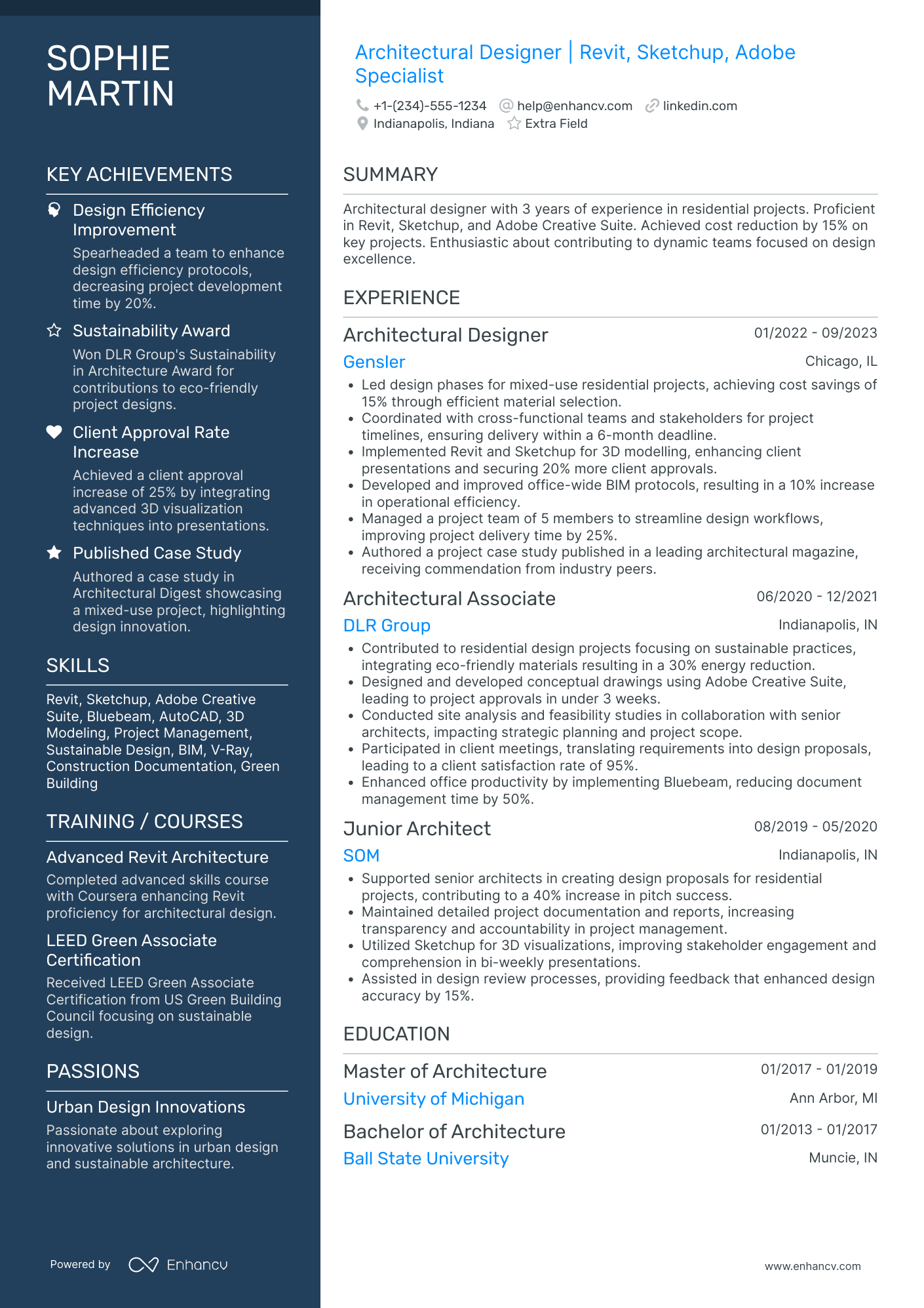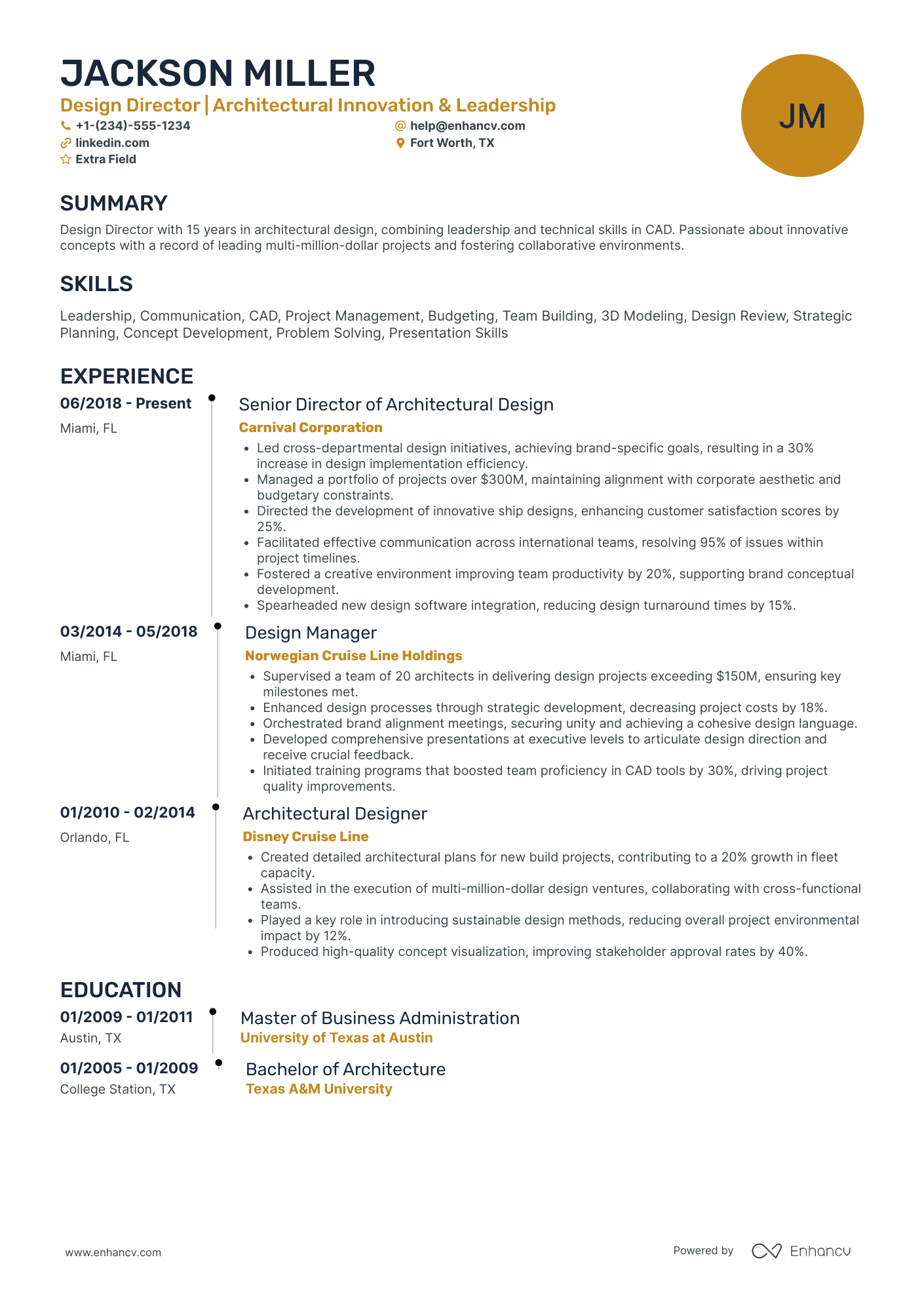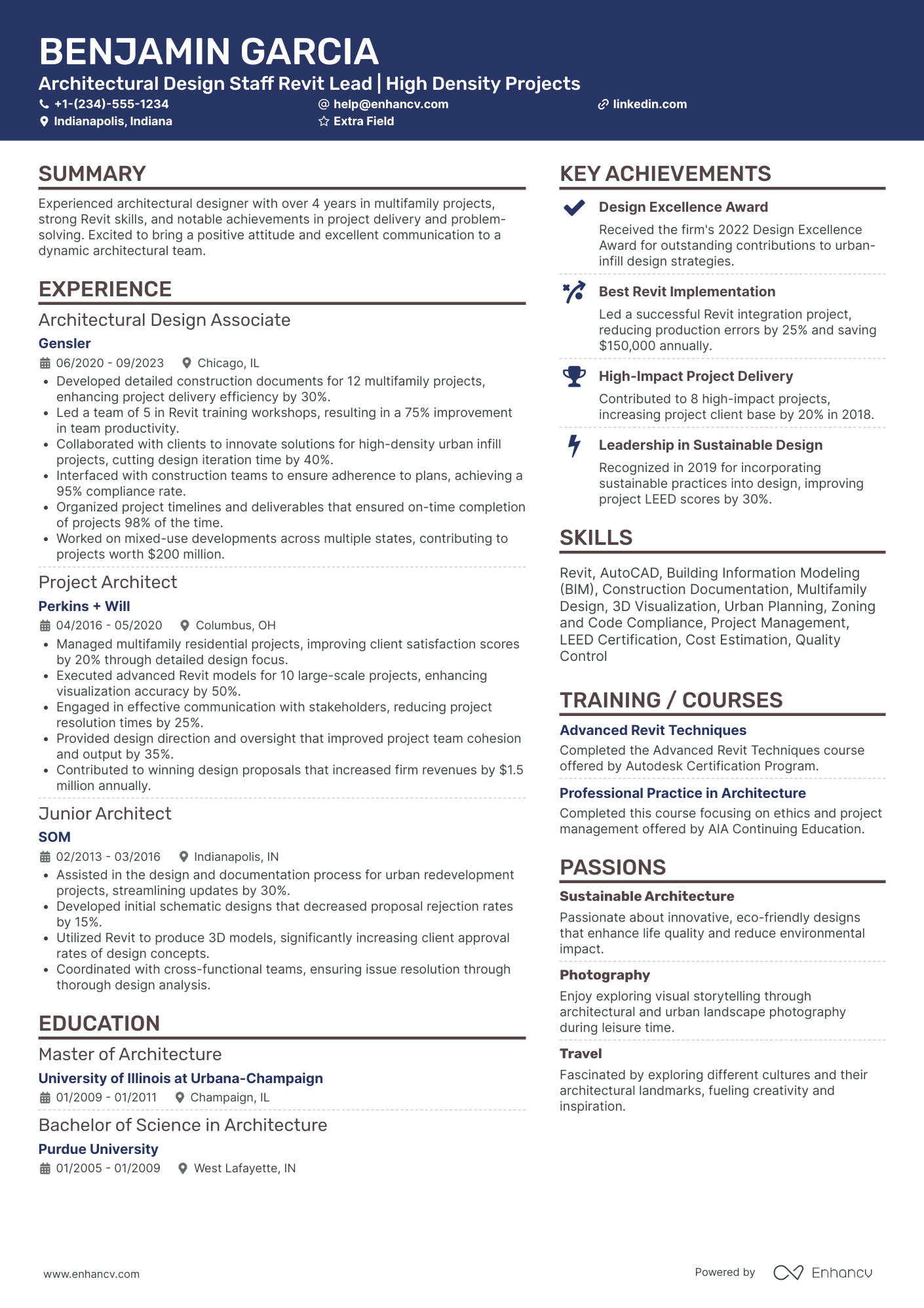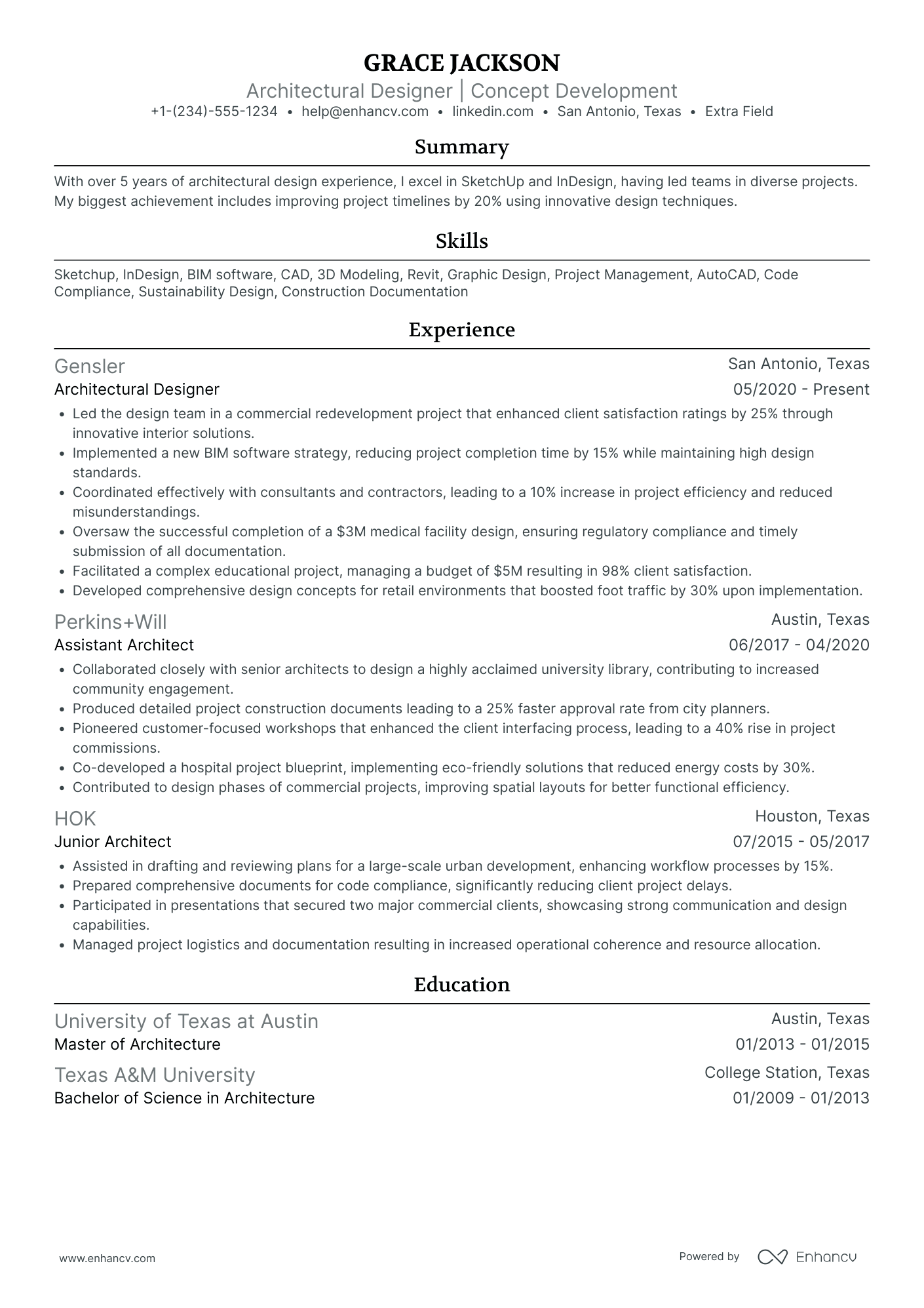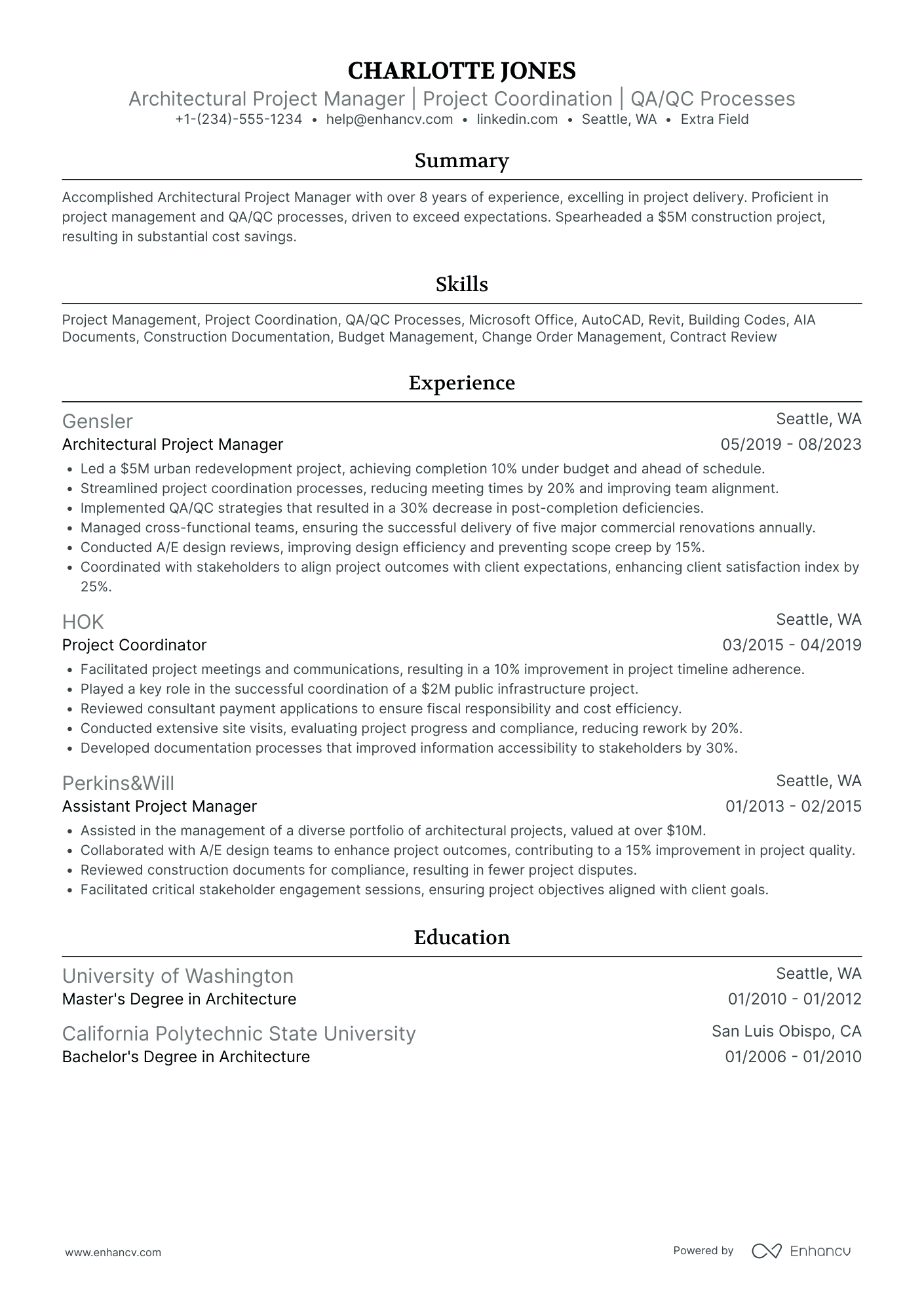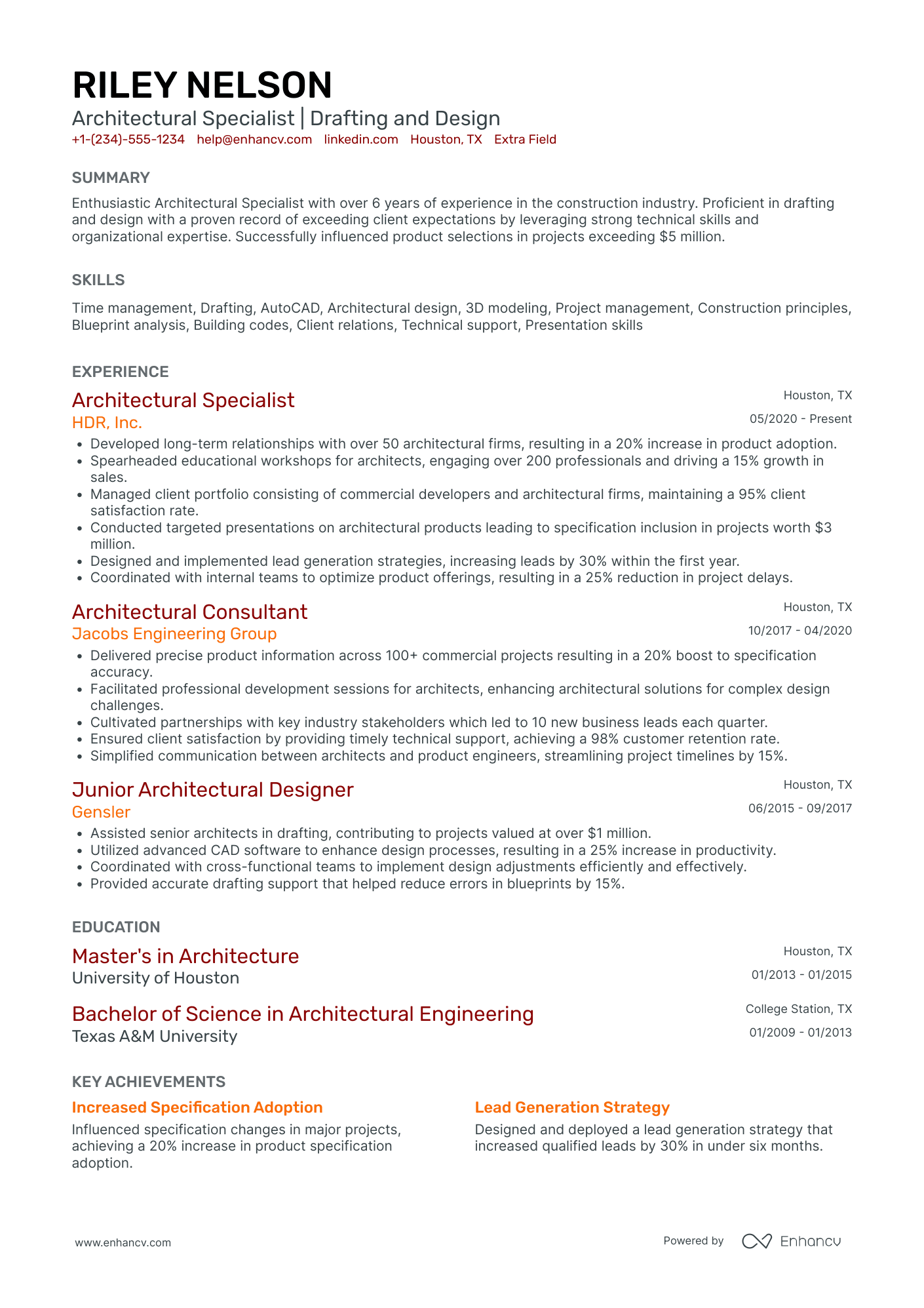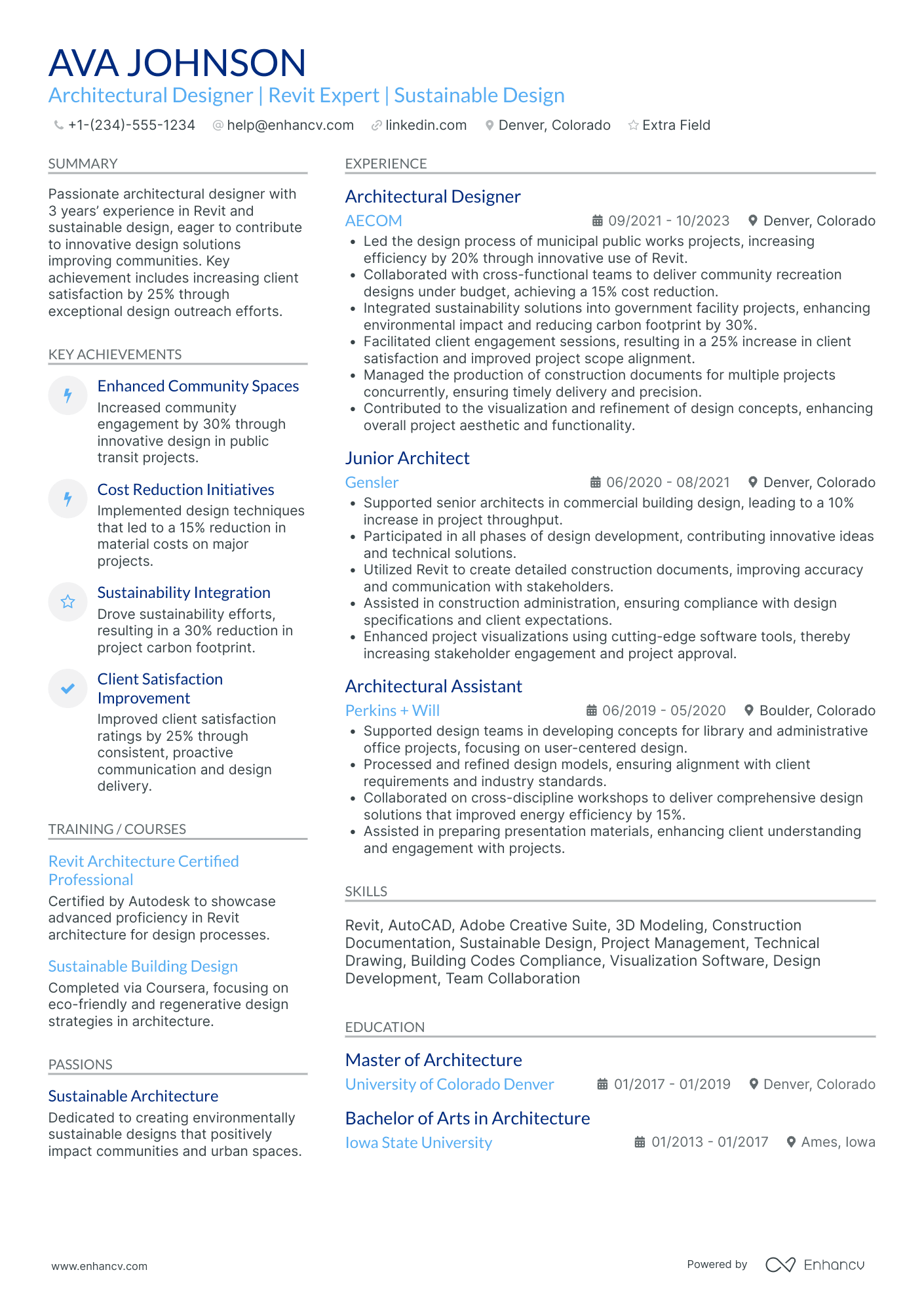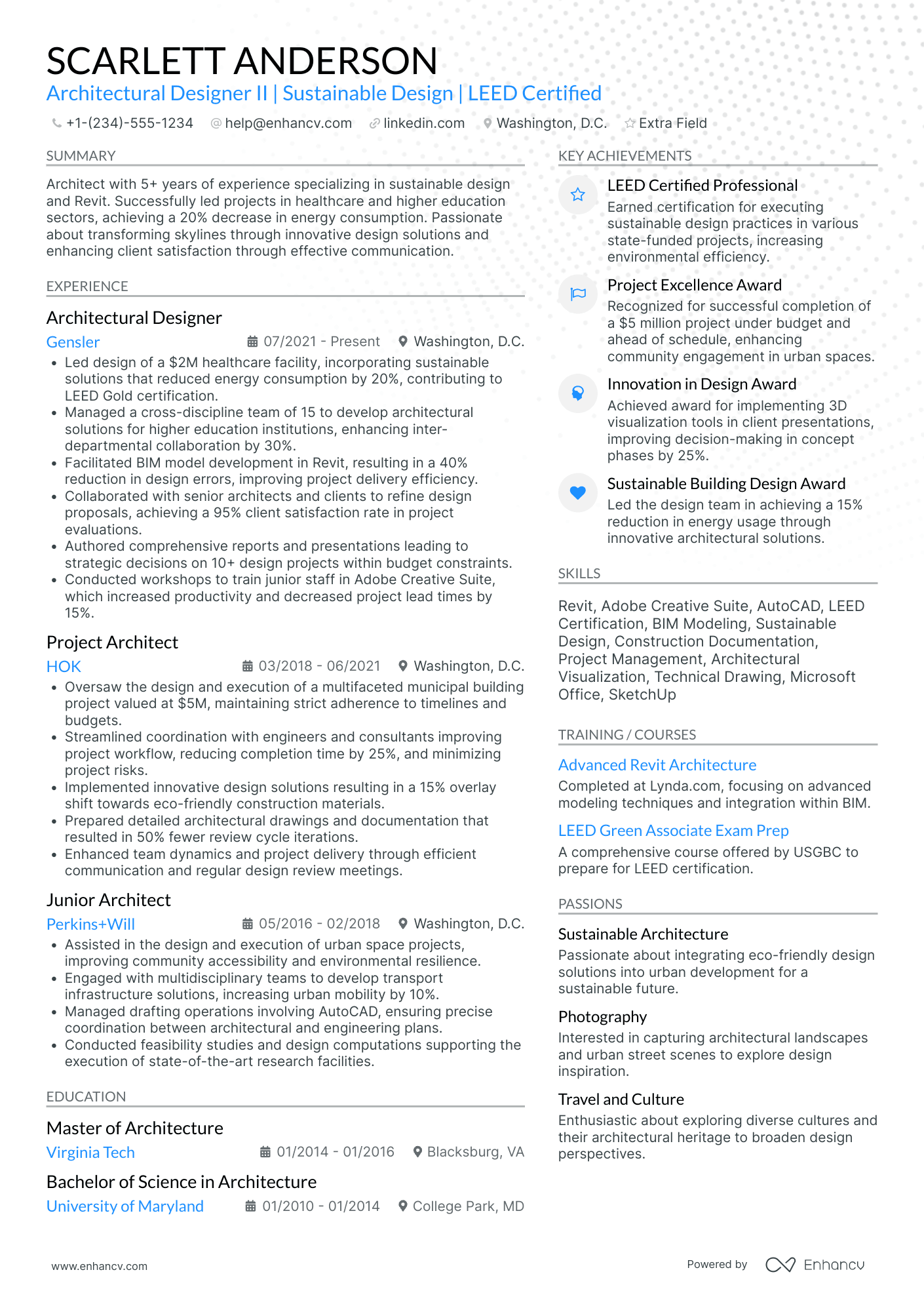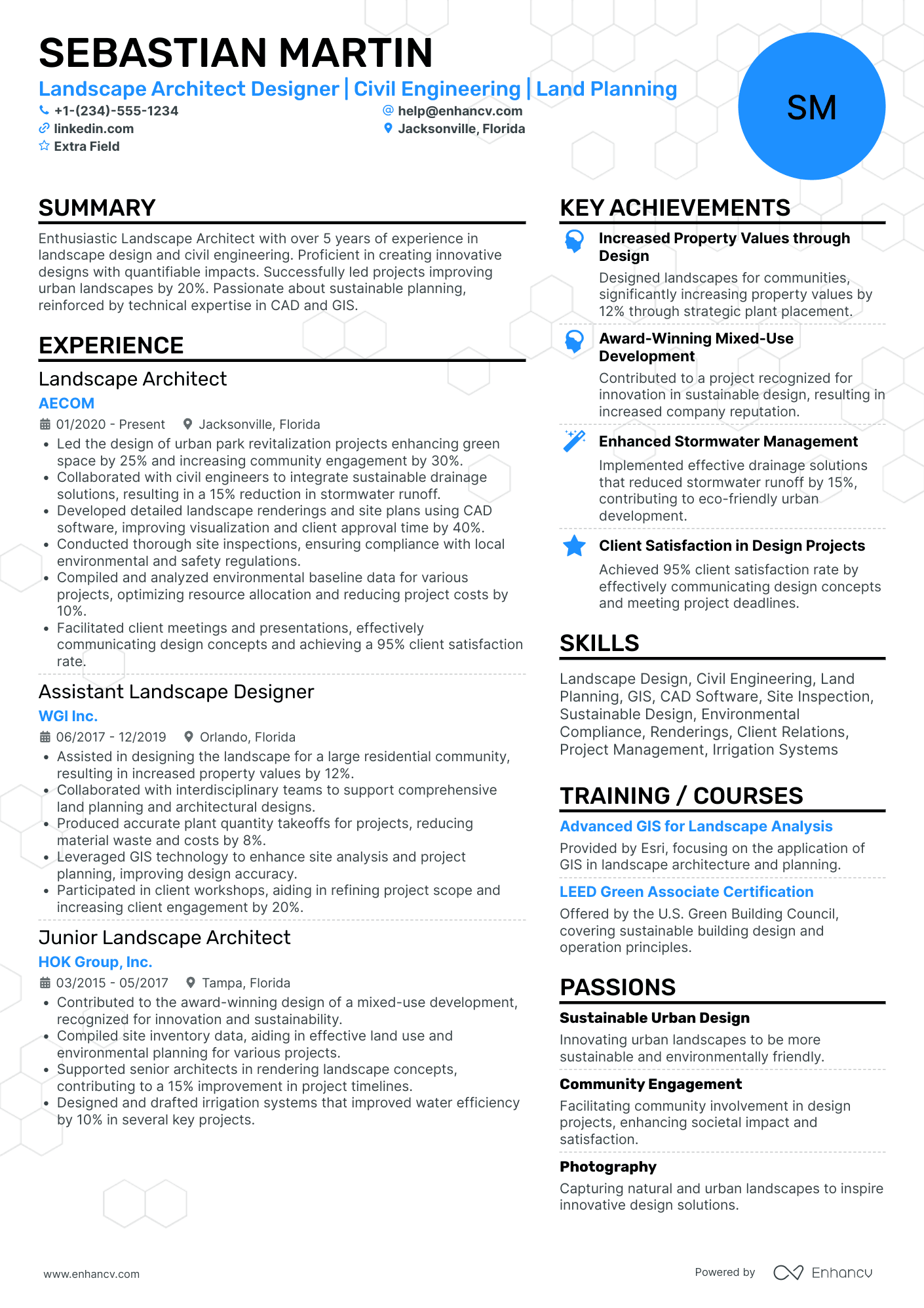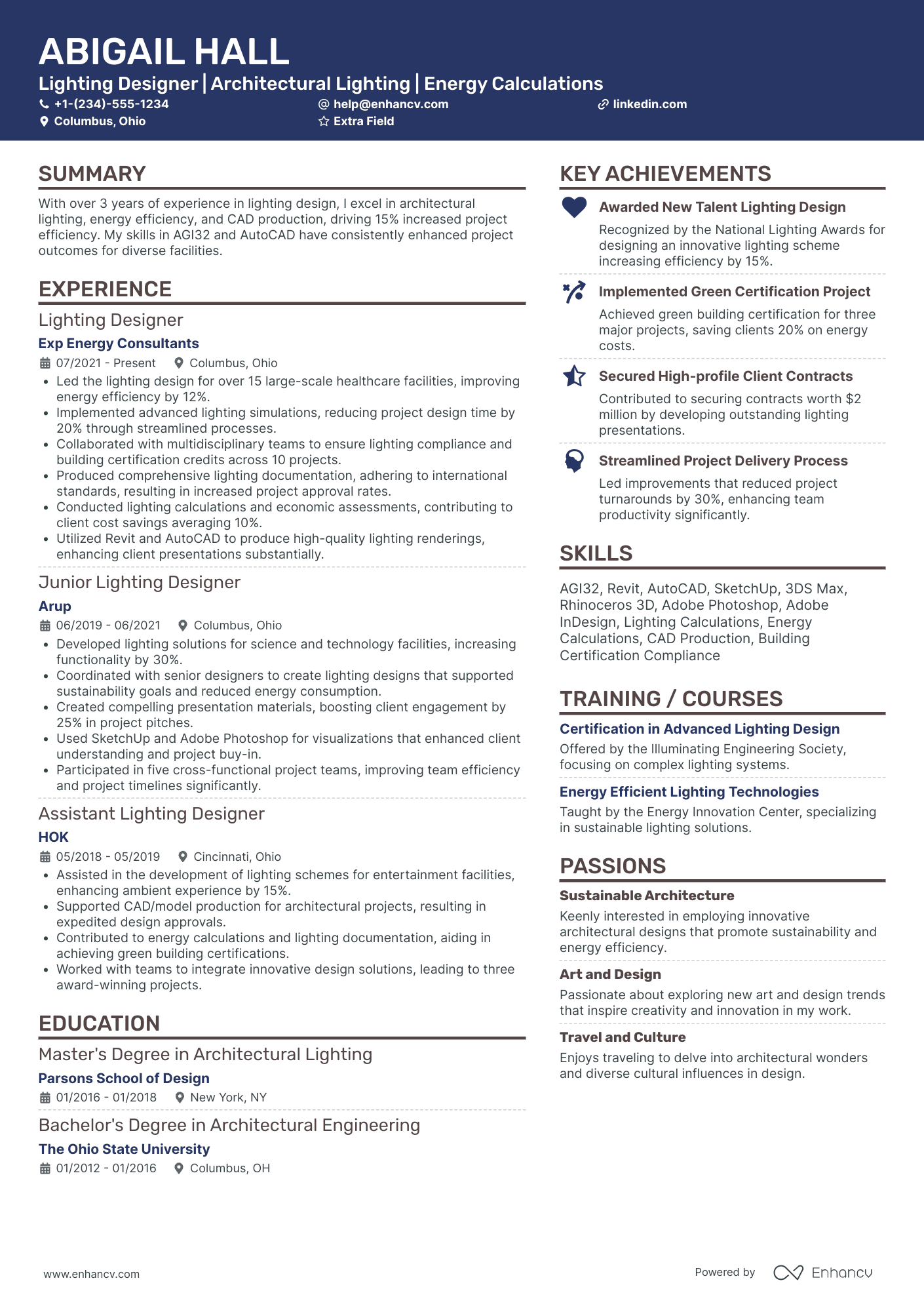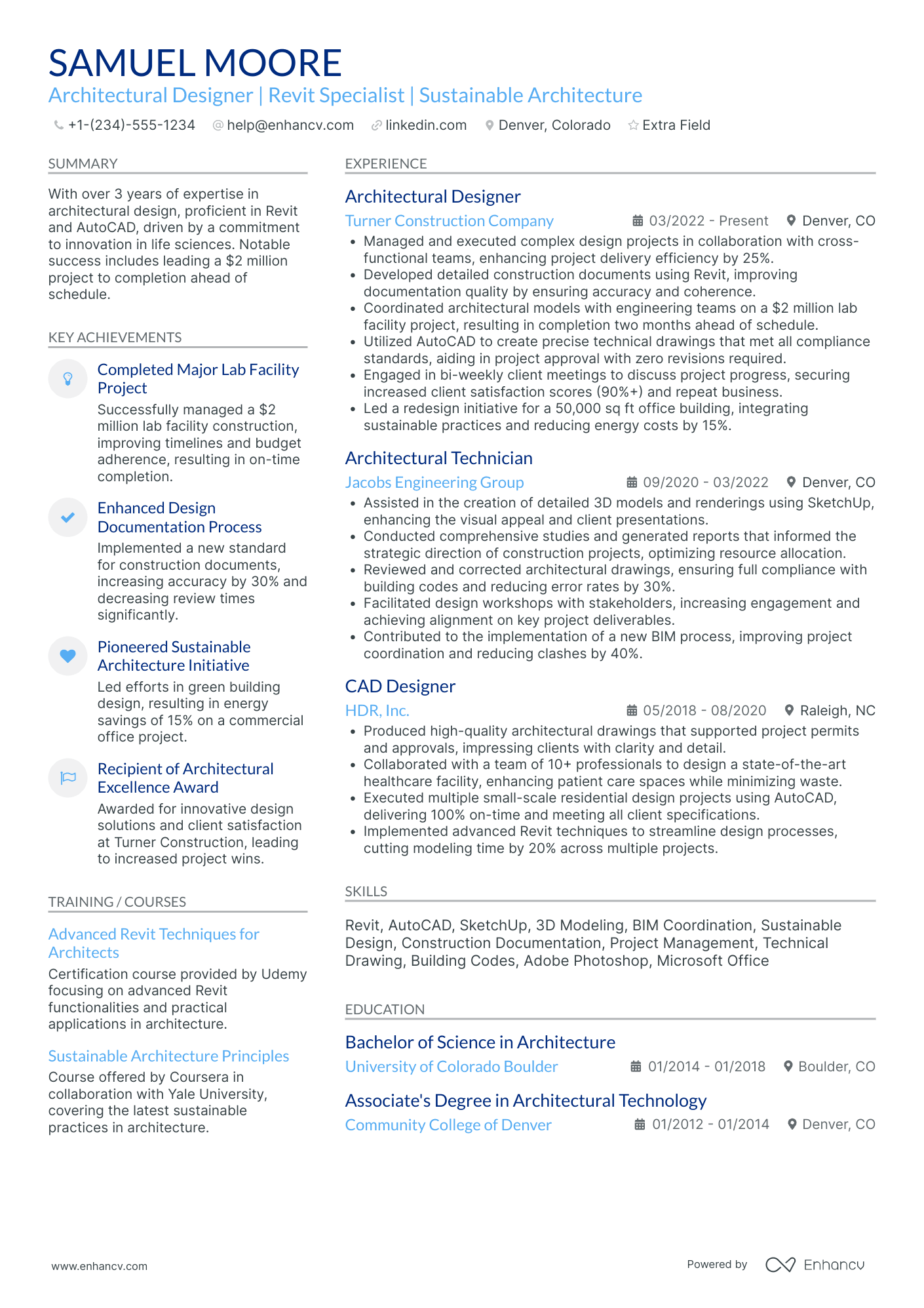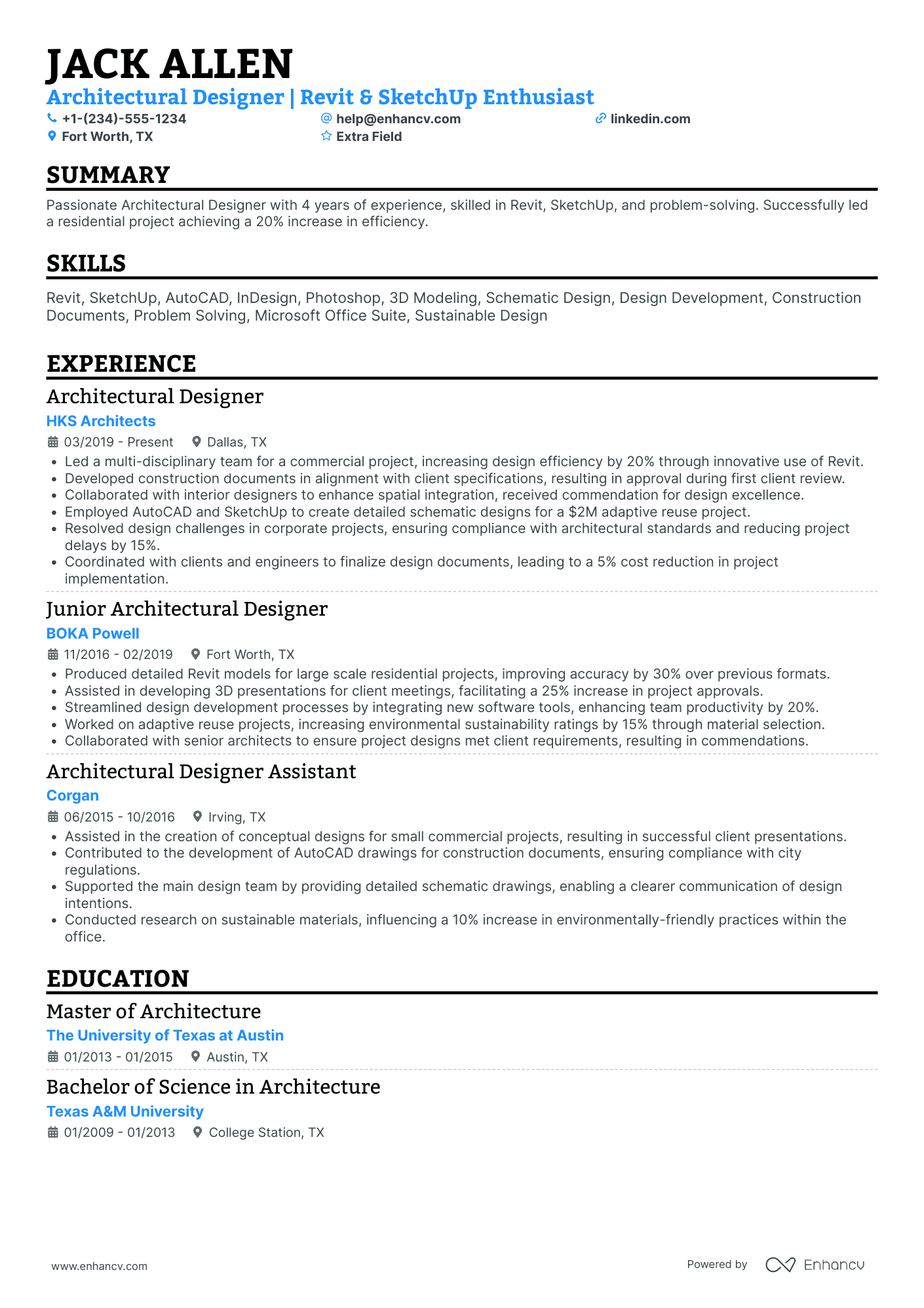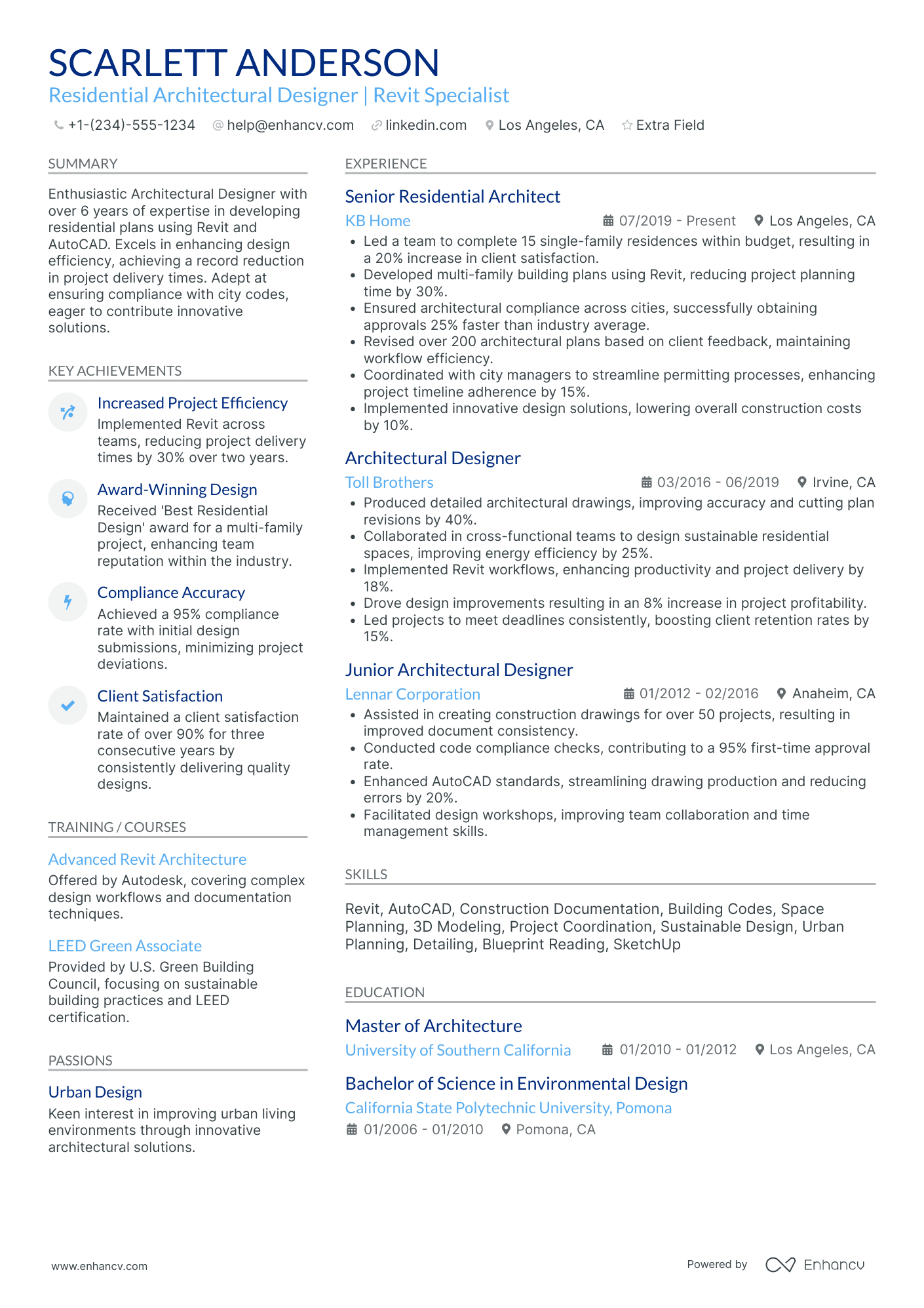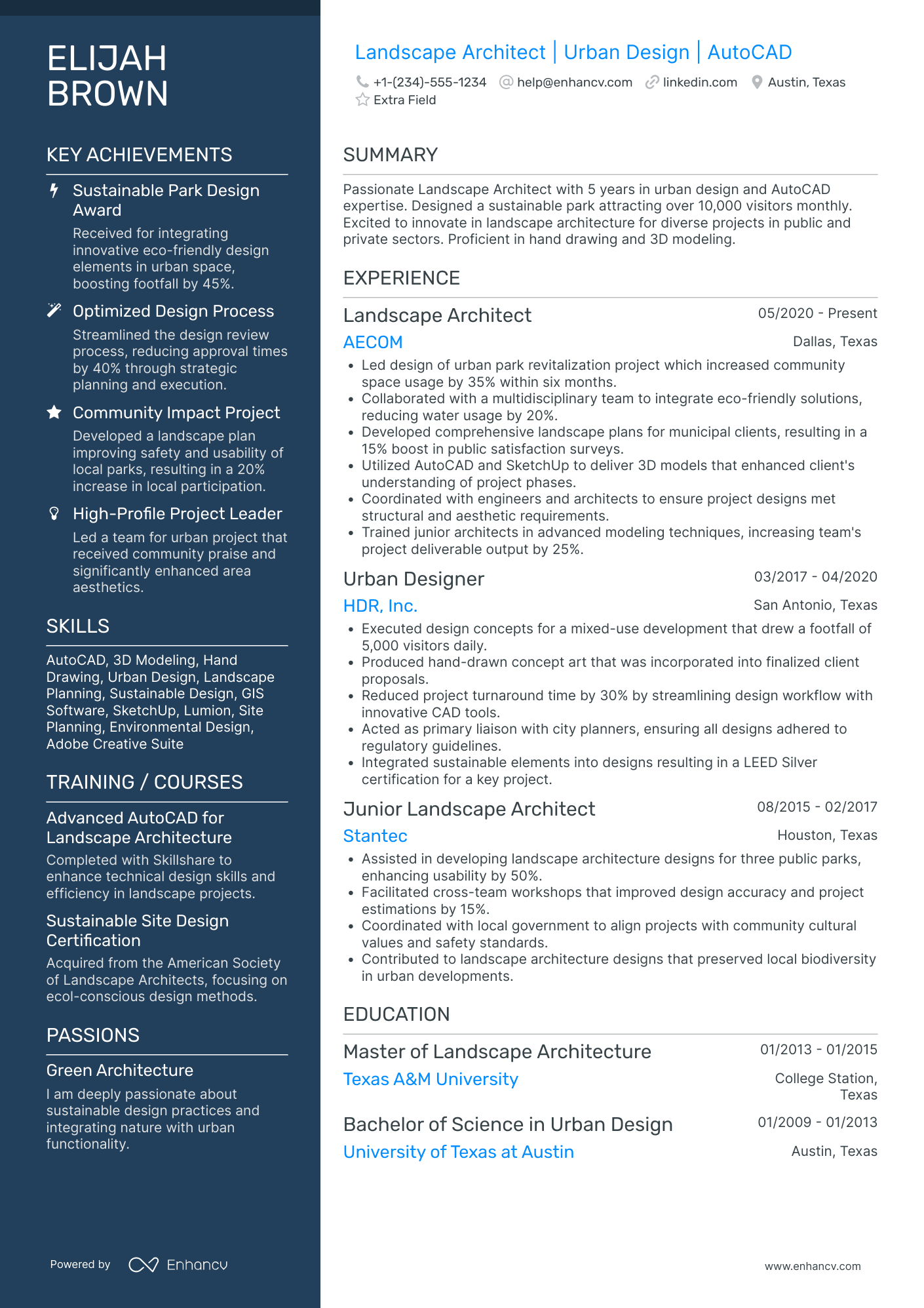Are you looking to land a job in Architectural Design?
You so far knew that all you need is a solid background in 3D design and construction.
Couple that with a degree in Architecture and some certifications to boost your credentials and you have the job in your bag.
So how come that dozens of recruiters send you the “We’re sorry, but…” email?
Seems like the recruiter read the first few lines of your architectural designer resume and was not impressed.
Did you back up your claims with your value proposition? Or simply listed your previous duties?
We’re here to help you eliminate those simple mistakes from your Architectural Design resume.
Without further ado, let’s get started.
What you’ll learn from this architectural designer resume
- How to create an architectural designer resume that will hook the hiring manager from the start.
- How to balance technical experience and creativity in your resume
- How to build your resume experience section based on your previous career achievements
- How to make sure your skills section complements well with your job experience.
- 7 Architectural Design resume examples that show what you should and shouldn’t do to get recruiter’s attention
How to write an architectural designer resume
Crafting an Architectural design resume can be tricky. Almost all sections of the resume hold the same amount of importance. Be careful how you pick your resume layout. Here as a guide on how to write a resume.
From your skills and experience, down to your educational background and certificates!
It’s a job that’s locked to a specific degree and certification. Meanwhile, work experience will play a heavier role in consideration for more high profile roles.
So, how do you present your value proposition? There are different ways to do that and they are as follows:
- Functional resume - the brunt of its focus is on the skills, putting more effort into crafting it and positioning it where it can easily be scanned - at the top of the resume. The professional summary provides more exposure to the relevant skills over work experience.
- Hybrid - This type is a mix of both functional and chronological. The skills and the experience sections are placed on either at the beginning or in the middle.
- Reverse chronological resume - the most common type of resume which lists down work experiences with the most recent one on top and the dated ones at the bottom.
- Creative resume - a well-designed resume that uses an unconventional positioning of the different resume sections. The left-hand sidebar is typically the section for skills and achievement. It’s a semi-infographic looking resume. Here are 23 of the most creative resumes, for inspiration.
If it’s a job that calls for experienced architectural designers? Then go with the Chronological or Reverse-chronological format. Are you a newbie? Then go the hybrid resume route.
Are you confident that your value proposition is solid enough to be considered no matter how you present it? Then add some creative touch into it! Just don’t make it look too gimmicky and over-the-top!
A design that sells is one that finds a balance between creativity and functionality.
Which are the top resume sections for architectural designers
- Header
- Summary
- Experience
- Technical skills
- Education
- Certification
Think twice before submitting your architectural designer resume header
2 architectural designer Resume Header Samples
In reality, there is no right or wrong way to write your resume header. However, you can optimize the header to make you look proficient in certain specializations.
While this straight out answers the requirements of the job posts, it does not go the extra mile to convey the real value of the candidate.
This example expresses the candidate’s level of competence. Plus, it highlights certain specialization that is relevant to the profession.
By adding those simple but important keywords into the header, the candidate instantaneously uplifted his or her image at first glance by the recruiter. If you have a LinkedIn account, make sure you link it. Also, if you have a portfolio with your designs, that will strike a good impression, as well, so make sure you add a link to it!
Make sure to tell your professional story in your architectural designer resume summary
A compelling resume summary must have juicy bits of information on the candidate’s relevant achievements and the skill set that was involved in the process, primarily.
Also, include some of your key qualifications or competence that are relevant to the job post.
Pro tip
A career objective line will suffice for fresh out of college candidates or for those who are simply aiming for an entry-level job to kickstart a career in Architectural Design.
Optimize your resume summary and objective for ATS
Drop your resume here or choose a file.
PDF & DOCX only. Max 2MB file size.
2 architectural designer Summary Samples
What to keep an eye on is not sounding as generic as the other candidates. You need to make your resume stand out from the others.
If your resume is mediocre, to say the least, it will end up with the rest of the candidates - in the archive.
Being result driven in your summary is not only a subtle but also an effective way to flex your level of competence, but it can also give the recruiters a teaser of what to expect in the experience section of your resume.
Claiming and flexing some of your achievements may be a bold move, but it sends a message of self-confidence to the recruiter and hiring manager.
How to frame your architectural designer resume experience
For starters, as a gold standard, write the actual accomplishments you’ve done throughout your time in your previous jobs instead of your responsibilities.
Not only will this make you sound outstanding, but you are also less likely to sound like the rest of the candidates this way.
Be descriptive and specific.
Describe how you managed to conquer a task or a project and culminate it with the end result.
Throw in some actual figures to give it a lasting impact on the recruiter or hiring manager.
Adding figures to certain items in your job experiences will give your resume a boost!
Feel free to also list down the tools that you’ve used and how they were instrumental to your feats.
Architectural design resume experience examples
- •Involved with the design and creation of revit drawings.
- •Consult client to discuss and finalize proposals.
- •Determine and document materials, colors, equipment, design, and cost estimates.
- •Monitor construction work to ensure compliance to plan or blueprint.
The bullet points above don’t exhibit the extent of the candidate’s expertise in Architectural Design.
While it does provide a certain amount of information about the candidate’s work experience, it doesn’t go as far as how the candidate executed his job.
- Was he efficient?
- Is he a good negotiator?
- Are his designs cost-efficient?
- Did he provide an exceptional design solution that made a positive impact on the budget or the overall construction efficiency?
All those questions seem unanswered.
- •Consistently drafted plans for zoning review using AutoCAD
- •Modeled presentations for design proposals with 3D SketchUp
- •Complete approximately 5 major projects per year with the architectural team, of an average $250 million in build-design value
- •Aided in build-designing a total of sqft 20,000 commercial space across the state of AZ
- •Completed projects below the proposed budget. 10 to 20% less than the budget.
This example of work experience breakdown provides an actual overview of the candidate’s job and his performance.
Not only can recruiters determine the actual capabilities of the candidates, but they can also gauge his competence and actual work performance.
Make sure your skills stand out in your architecture designer resume
Most of the core skills for this job you develop in college or university.
With that being said, the essential skills are a given when you’re an Architectural Design professional.
Both soft skills and technical skills are taught and developed through the course of the Bachelor’s Degree.
And if you are applying for an entry level job, some time before your graduation, make sure you add the expected date of graduation.
If you’re in this profession, it’s imperative for you to have the following skills listed in your resume skill section.
Top 5 technical skills for architectural designer resume
- Preparation of blueprints, drawings, and specifications.
- Proficient in AutoCAD, BIM, and Revit
- Knowledge of building systems and construction
- Awareness of sustainability guidelines
- Construction techniques
These are the most wanted architectural designer soft skills on resumes
- Ability to develop material and color presentations
- Ability to manage large projects
- Analytical thinking
- Reason skills
- Design skills
- Collaboration
- Detail-oriented
- Creative thinking
How can an education section help my resume?
Obviously, you can’t practice Architectural Design if you don’t hold a degree in Architecture. This means that getting a formal education in Architecture is the only path to this profession.
If you don’t have one, you probably shouldn’t be lurking in this guide for some enlightenment in the first place.
Basically, the education section is among the key sections of an Architectural Design resume. Unless, of course, you’ve had more than enough experience in this field.
Entry-level candidates or those who are fresh out of college, this is the most valuable credential that they’re holding. Next to this is their internship experience.
We can't stress enough the importance of a formal Architecture education in pursuing a career in this field.
Once you’ve got that figured out, the basic formatting requirements of listing your education on your resume are next.
You don’t really need too much effort to do these, just write your education section with these points in mind:
- Your highest degree should be written first (Ph.D-MA - BA - Associate)
- You don’t need to list your high school if you’ve indicated your college degree.
- The name of the school you graduated from.
- Your degree or Major/ Minor
- Year you graduation
- Location of school
Pro tip
If you hold a certain major and a minor, your majors should be mentioned first.
Do i need to list certificates in my resume?
You can never go wrong with having the appropriate certificates for the profession you are pursuing.
If anything, certificates make you more competent on paper in real life.
Other than an actual professional license, certificates will also give you more credence in certain specialties in the field of Architectural Design.
Among the most common certifications for this profession are as follows:
Top 3 architectural designer certificates for your resume
- National Architectural Accrediting Board (NAAB).
- Computer-Aided Design (CAD)
- CLARB Certified Landscape Architect
What to remember when writing an architectural designer resume
- You can only practice this profession by obtaining a degree in Architecture.
- The reverse chronological resume is best for more experienced candidates, whereas a hybrid resume will be useful for newbies.
- Don’t discount the significance of adding the significant titles to your header.
- Your educational background and certificates are equally as important as your experience. Put as much focus on this section as you would on your experience.
- You must acquire a license before you can practice Architectural Design.
Architectural Designer resume examples
By Experience
By Role
